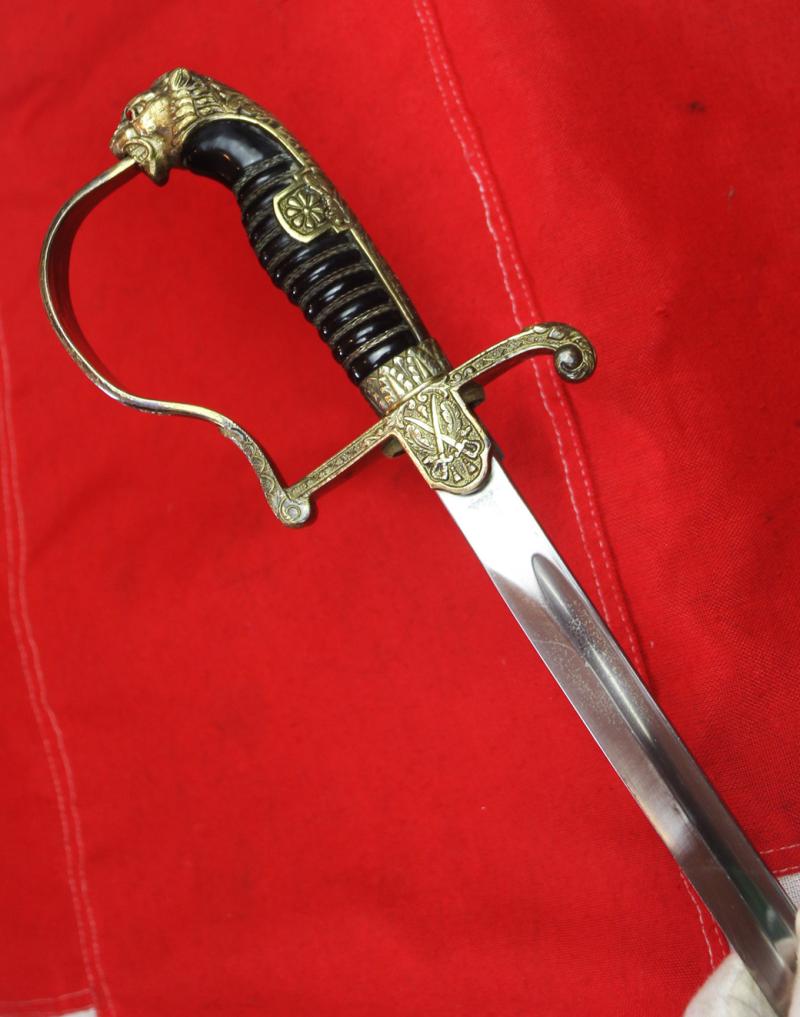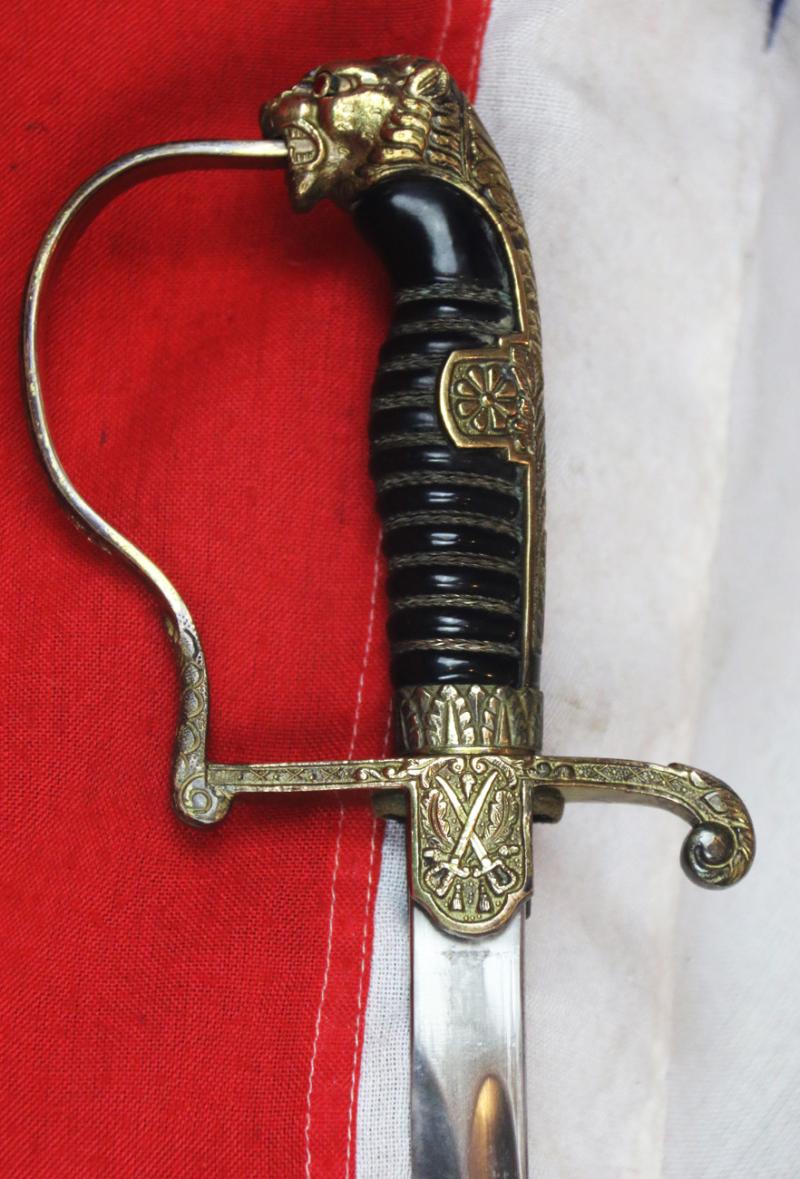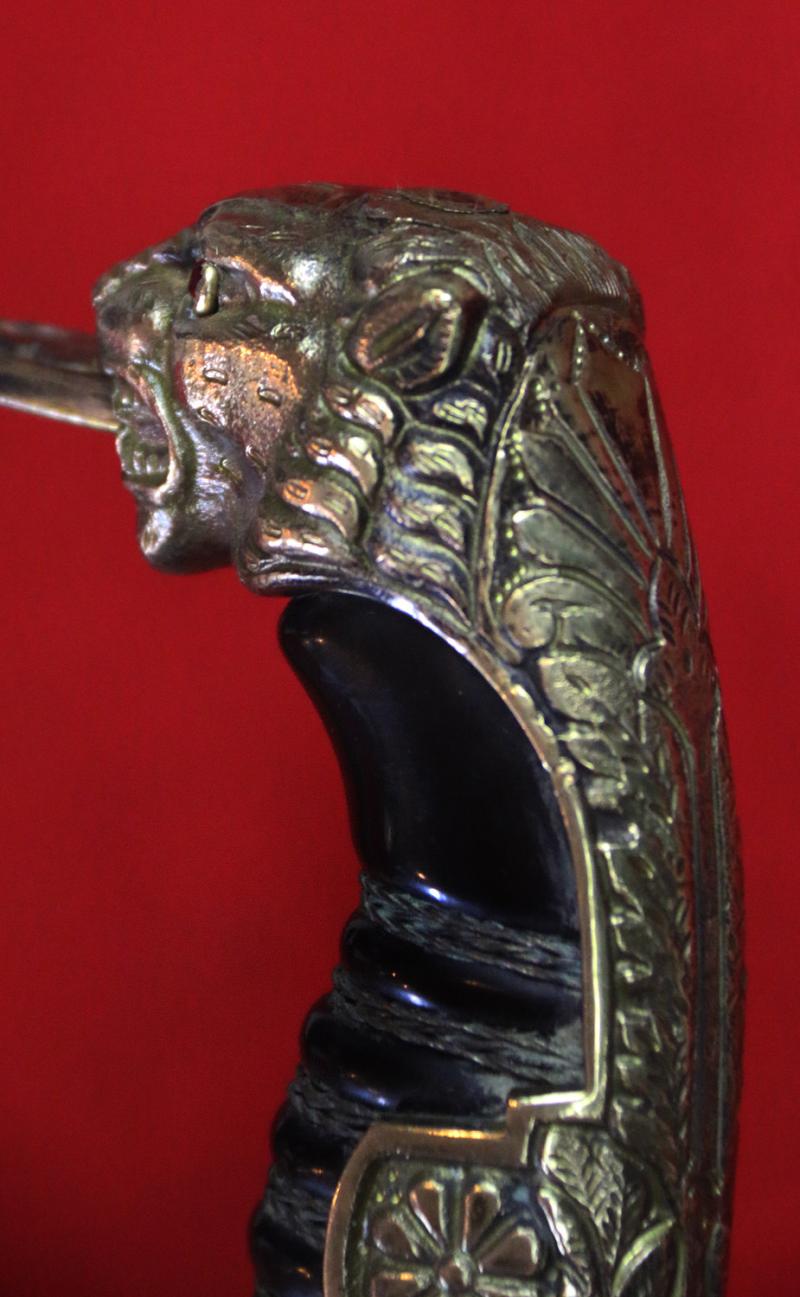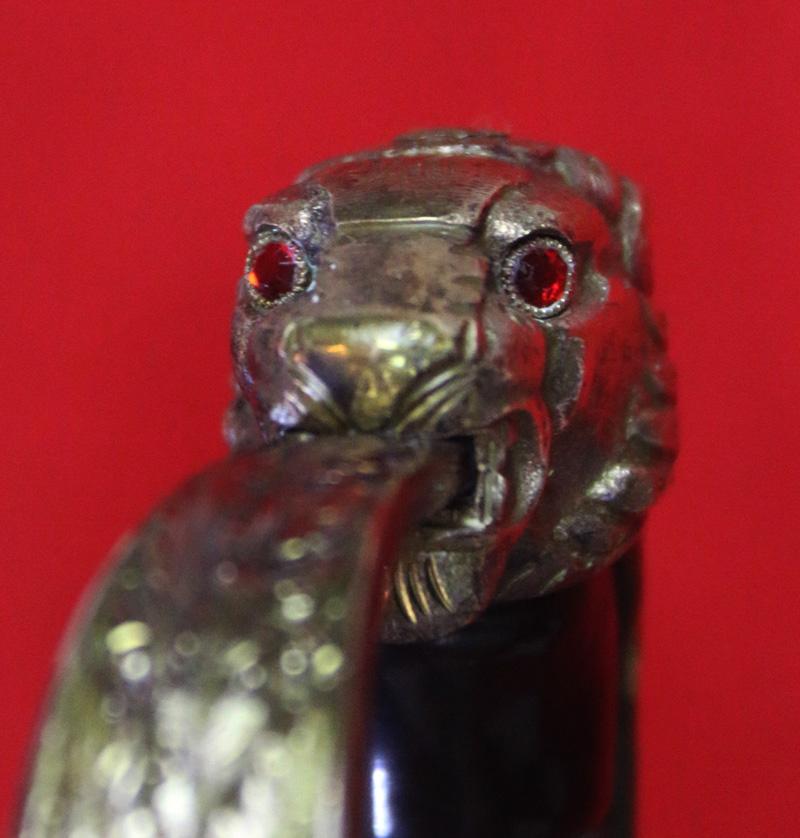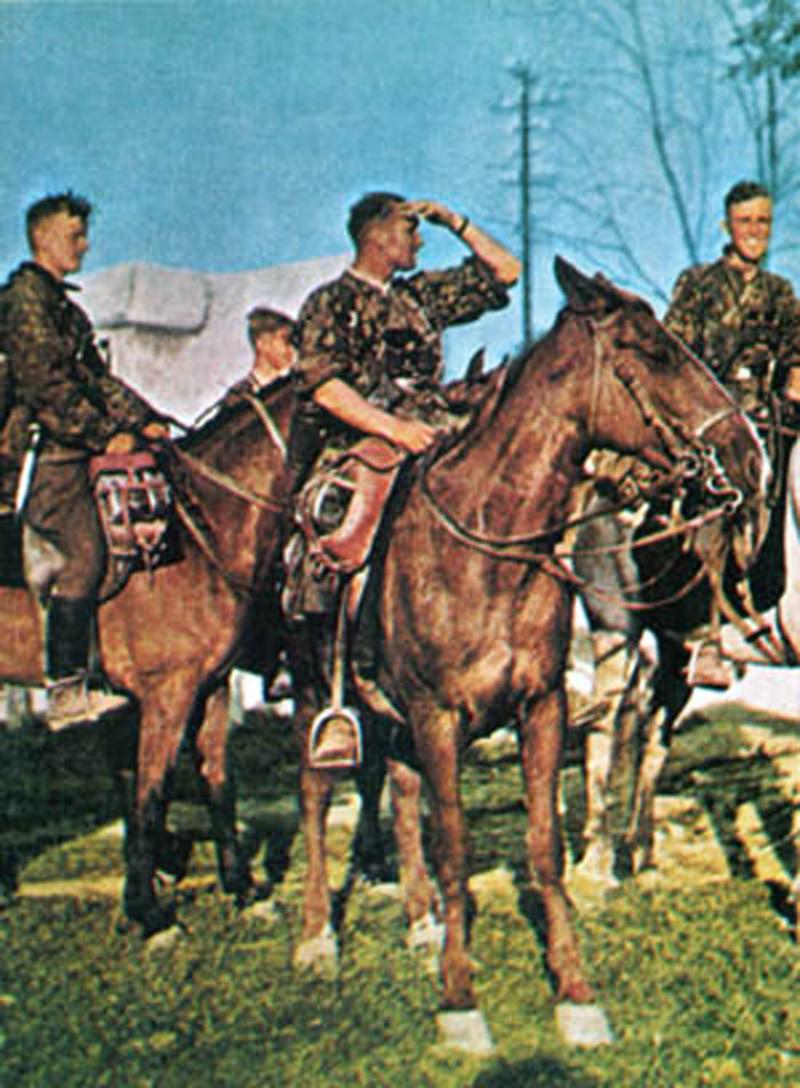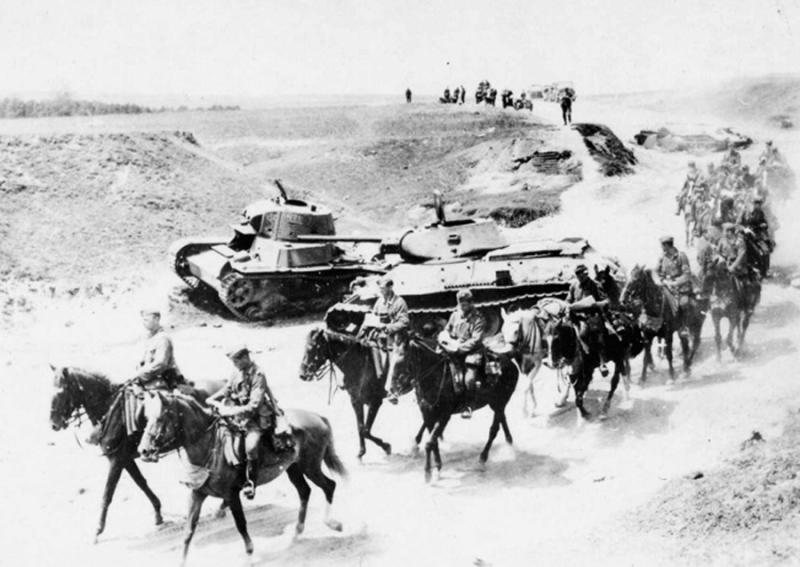A Superb German Pre War & WW2 Ernst Packe & Sohn Leopard's Head, Cavalry, Regimental Officer's Sabre
Pre War & WW2 German Army Officers Sword by Ernst Pack & Sohne, Solingen, a very good example of the scarce leopard's head pattern type sword by this maker, with langet having traditional cavalry regimental device of crossed sabres. With flat knuckle bow with oakleaves relief, leopard head pommel with glass ruby eyes and patterned backstrap. Black celluloid covered grip with wire binding. Housed in its original steel scabbard with single hanging ring. Slightly curved steel blade with makers trademark to the base. Generally very good condition.
By 1939 the German Reich possessed 3,800,000 horses to be used in WWII German cavalry while 885,000 were initially called to the Wehrmacht as saddle, draft, and pack animals. Of these, 435,000 horses were captured from the USSR, France, and Poland. Additional horses were purchased from Hungary, Romania, Czechoslovakia, and Ireland.
Klaus Christian Richter, himself a member of the 1935 German cavalry class, commented in his book Cavalry of the Wehrmacht 1941-1945 on the physical and psychological stress of the war: “The old soldierly virtues proved themselves once more: courage, sense of duty, feeling of responsibility, comradeship, and as well love of the horse.” German riding schools, horses, and riders were of the highest quality, and from 1930 to 1940 competed in every important international event. Their crowning achievement came at the 1936 Olympics when the German team won six equestrian gold medals and one silver, dominating all three disciplines—dressage, jumping, and military—a feat never repeated.
A cavalry brigade consisted of 6,684 men and 4,552 horses plus 409 horse-drawn vehicles and 318 motorcycles (153 with sidecars), as well as 427 cars and trucks and six armored scout cars. After the success of these troops during the 1939 Polish campaign, the 1st Cavalry Division was formed in October 25, 1939. The cavalry division would go on to fight in Holland, Belgium, and France during 1940. When it was time to attack Russia, the division came under the command of Panzer Group II, commanded by General Heinz Guderian. At this stage, because some 17,000 horses were employed, the sheer number caused supply problems.
The two WWII German cavalry divisions of the Waffen SS, after fighting for two years on the Eastern Front, were destroyed in the desperate fighting around Budapest, which was taken by Soviet forces on February 11, 1945. Wehrmacht cavalry units composed of anticommunist Cossack volunteers surrendered to the British, and despite promises to the contrary, they were forcibly repatriated to the Soviets who considered them collaborationists and traitors. As a result, the common soldiers received eight-year prison sentences in the Gulag system, while the higher ranking officers were hanged.
Blade measures 33 ½ inches, overall 39 ½ inches.
Code: 25433


